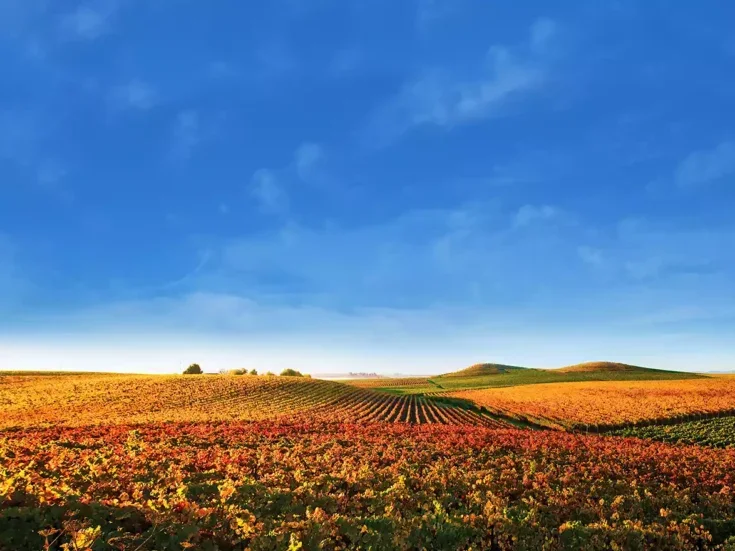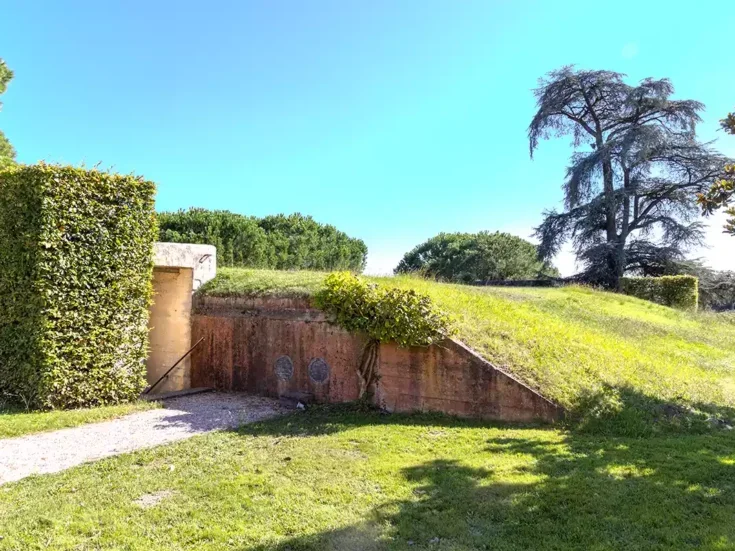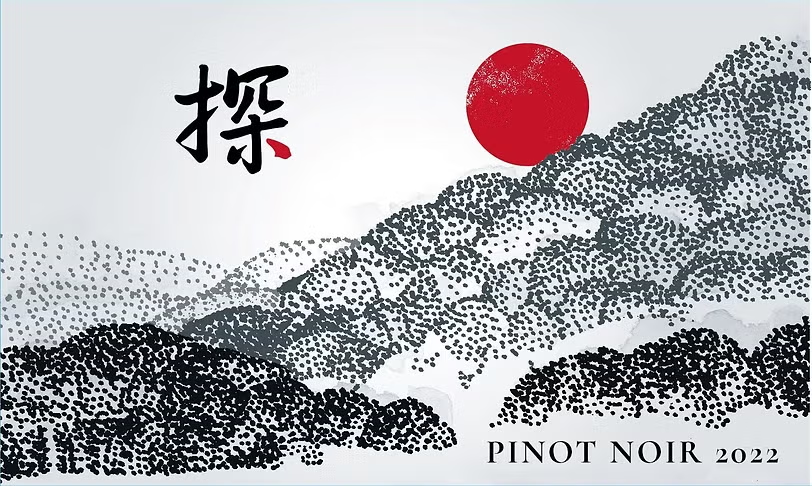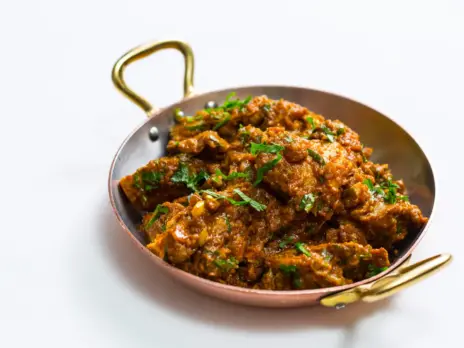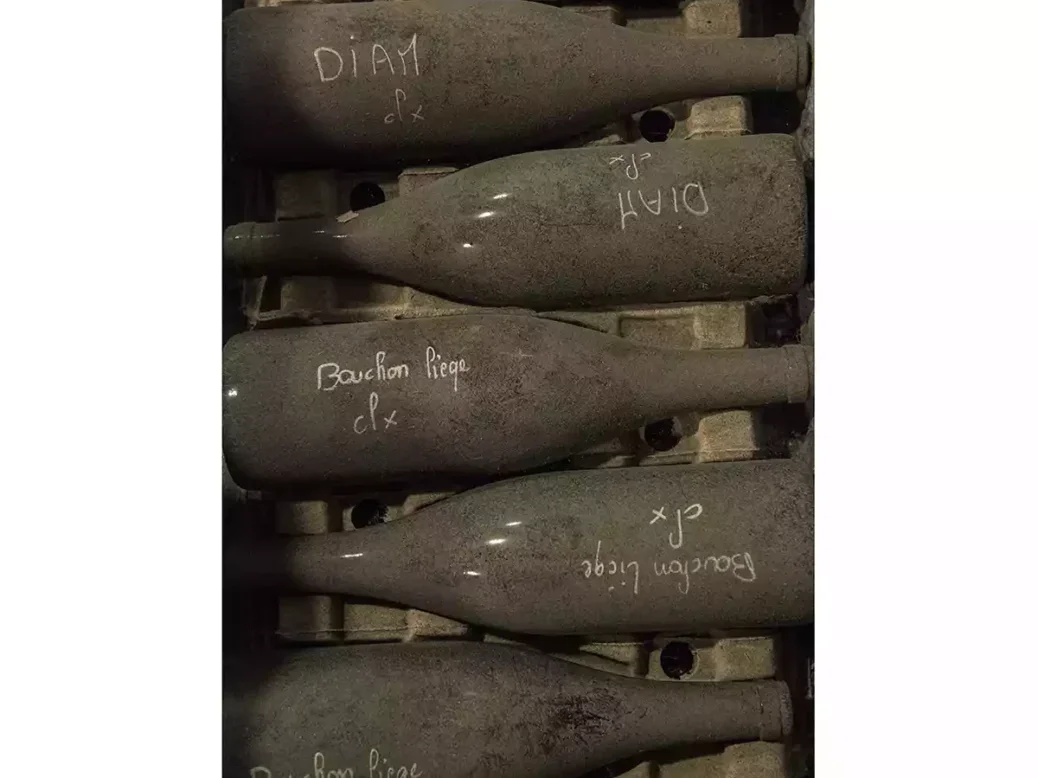
A sunny winter’s day found me striding alongside the River Thames to Farr Vintners in London for a tasting of cork versus screw cap, largely from Guffens-Heynen, in a vertical that stretched back to 2003. You might suppose this face-off would be a forgone conclusion, particularly for wines many years in bottle, but on the contrary, the exercise was full of surprises.
The first small surprise was the presence of Diam. Before the tasting I had time for a quick chat with Julien Desplans, Jean-Marie Guffens’s right-hand man and winemaker since 2006, who explained: “With hotter and hotter vintages, we decided to change many things, from using cement tanks, to a very long natural fermentation, so we needed to be as reductive as possible and we felt there was more certainty to continue the reductive aging with screwcap.” So, in 2003, disillusioned by the unreliability of cork, Guffens began bottling part of his production under screwcap for Farr Vintners, while continuing with cork. Come the 2010 vintage, he abandoned cork for Diam at the domaine, and in 2012 he did the same for the négociant wines under the Verget label.
While this tasting focused largely on Guffens-Heynen and Verget, it also included a few wines from the Brajkovich family at Kumeu River, who were pioneers of screwcap in New Zealand from the 2001 vintage. Farr Vintners have long collaborated with Kumeu River, importing these screwcap wines into the UK—which was a courageous move 20 years ago. There was also wine from Felton Road Winery in Bannockburn, which started using screwcap in 2004, and from Château Rauzan-Ségla in Margaux, which made a parallel experiment with its 2009 and 2010 Ségla. Finally, David Gleave MW, a staunch advocate of screwcap, put Italy in the ring with Isole e Olena: 2005 and 2016 Cepparello, courtesy of Liberty Wines. For each wine there was a screwcap version and another under cork or Diam, which were assessed by 17 experienced tasters (listed at the end). We were told the wine but not the closure, and votes were taken after each flight of six wines. The panel’s scores are included in my tasting notes.
My observations are based on some instant impressions during the very swift tasting time we were allotted, but more so from reflection after the tasting as I reviewed my notes and considered all the facts.
As many readers will be aware, a cohort of top producers of white Burgundy have made the switch to Diam over the past decade, but very few use screwcap, and for those who do, it is for entry-level wines. Stephen Browett remarked, “Jean-Marie Guffens is to be applauded for his decision to experiment with closures 21 years ago, when most producers still had their heads in the sand, refusing to acknowledge the clear problems of white Burgundy at the time.” But as he also pointed out, Guffens is not Burgundian, so was more open-minded. Certainly, being Belgian he would not be so entrenched in tradition.
Once we had got stuck into the tasting, it gradually became clear that all is not equal among screwcaps. Julien Desplans had told me that Guffens began by using the Sarantex screwcap, but switched to SaranTin in 2014. As the wines were not shown in chronological order, it was really afterwards, contemplating my tasting notes, that the extent of the effect of the two screwcaps became apparent. Of the six wines tasted under Sarantex screwcap, I preferred the alternative closure for all but one set, for which I had no preference. I was aware that screwcaps permitted different levels of oxygen ingress but as I don’t assess many wines under screwcap, I have not thought much about it, so I genned up on the difference with the Australian Wine Research Institute after the tasting.
It is not the aluminum screwcap that provides the protective barrier, but a polyvinylidene chloride (PVDC) insert that was developed in Australia in the 1970s and is commonly referred to as Saran. The “liner” market is currently dominated by two inserts that contain Saran—Saranex and SaranTin. In the latter, the Saran is layered with a fine tin layer developed to reduce the oxygen transmission rate. SaranTin is better equipped for long-term aging and guaranteed for 20 years, twice that of Saranex. There is a rather fancier version of screwcap, with variable oxygen transfer rate (OTR), allowing controlled oxygen ingress. The AWRI website states, “SaranTin liners play a large role in the Australian and New Zealand wine market for wines sealed under screwcap. In the European wine industry, however, producers using screwcaps tend towards Saranex due to the perception that wines sealed with SaranTin can develop ‘reductive’ characters due to the very low levels of oxygen ingress through the liner.” Hold this thought for later.
Meanwhile, it’s worth remarking that the earlier (pre-2014) vintages of Guffens wine bottled under Sarantex screwcap are older than the guaranteed ten years for this closure. Based on my impressions, I would drink them now, and, for that matter, would hesitate to age any wine under Saranex closure for too long. This reminds me that somewhere in my cellar I have a case of premier cru Chablis from Louis Michel under screwcap when they experimented with a dual bottling, possibly in 2005, and almost certainly Sarantex if the AWRI is to be believed. Will it be alive and kicking? I wonder.
Paul Brajkovich remarked, “We have always used the SaranTin liner as this is the most effective and long-lasting seal. Our own trial with Saranex and other liners showed oxidative affects after only a few months in bottle, so we discarded any idea of using those quite early on. I think the library of wines we now have under the SaranTin liner proves that this was the right decision.”
Incidentally, screwcaps are relatively cheap when compared with good-quality cork—20–30c for Sarantex and 45c for SaranTin, while the bottles are marginally (10c or so) more expensive for similar bottles used with cork. Diam closures cost 30–45c. Compare this with a high-quality cork, which will cost upward of €1. Admittedly, converting to screwcap from cork requires a new bottling machine, and there are dual purpose machines for those who want to use both closures for different markets, so there is an initial investment.
It was availability rather than price that drove Guffens’s decision to use Sarantex screwcaps for a decade, while in New Zealand it was the unavailability of quality cork that persuaded many producers to seek an alternative closure. The tasting, albeit of just a small sample of New Zealand Chardonnay, would suggest the wisdom of the move to screwcap, and this was confirmed by tasting a few reds—Felton Road Pinot Noir, Kumeu River Bordeaux blend, and Henschke Shiraz. Voting showed that most agreed. “The New Zealand wine industry seems to have been completely vindicated on its decision to switch to screwcap just over 20 years ago,” wrote Stephen Browett in a message to the participants following the event.
Maybe this result was predictable, but I was surprised to prefer Ségla and Cepparello under screwcap, although the panel was divided. I felt the screwcap wine displayed a more attractive evolution, showing freshness and greater textural elegance than those under cork.
The closure cannot, however, be seen in isolation. There are variables in the bottling process—the physical bottling and additions to the wine—something I felt the tasting exposed. The most obvious variable is the free SO2. Prior to the tasting, Julien Desplans told me he uses 20mg/l of free SO2 and 800ml/l CO2 for screwcap. For cork, he uses 30–35mg/l SO2 and 900mg/l CO2. For Diam, 30mg/l free SO2. “If we use less sulfur, the wines will be less fruity, but will stay fresher for longer.” I found the 2003 Corton-Charlemagne under screwcap quite oxidized, however, and Julien conceded that in the early days he used too little free SO2, before increasing the level from 2011. “I was a little bit troubled at the end of the tasting because I expected a bigger difference, particularly between screwcap and natural cork. But after a little rest, I was quite happy, for since 2011 I think we have managed the screwcaps much better.”
By contrast, some wines were arguably a touch over-reductive—in particular, the 2012 Meursault Les Clous under Diam 10. Tasting this wine, Julien felt he had added too much SO2 when he started using Diam in 2012. But I still preferred the 2012 Les Clous under Diam to that closed with Sanatex screwcap. I also preferred the Diam closure to the Sarantex screwcap for the Mâcon-Vergesson and St-Véran 2013s. So, for the vintages in which it was possible to compare Diam versus Sarantex, I preferred Diam; and across the tasting as a whole I found the Sarantex screwcap was consistently the worst-performing closure.
A quick aside on Diam, which comes in different grades—5, 10, 30, etc—that reflect potential years of bottle aging. Diam 5 would be used for a wine destined to be opened immediately. A Diam 30 used for the same wine, especially with a generous level of free SO2, could shut down a wine designed to be accessible. Horses for courses.
Julien uses 30mg/l free SO2 for all levels of Diam, commenting, “The porosity is the same between Diam 10 and 30. The difference is the guarantee of elasticity between the cork and the bottle—at least ten years guaranteed for Diam 10, and at least 30 years guaranteed for Diam 30—so, for us the level of free sulfur has to be the same.”
In the hot 2015 vintage, Julien plumped for a Diam 30 for both the Meursault Les Clous and the Pouilly-Fuissé La Roche, from its warm slope and limestone soil. I assume the warm terroir and rich vintage gave him some concern, but I preferred the more expressive nature of the wines under the screwcap—the higher-quality SaranTin. I felt the Diam 30 suppressed and overprotected the wines, at least for current drinking, but a few years down the line this could well be a good thing.
Reflecting on the other examples of Diam versus Saran Tin screwcap, it was also not clear cut. For the 2017 Tinus and C de Sec du Château Closiot Bordeaux, Julien used Diam 10. Once again, I felt the wines were more reduced under the Diam, but not excessively so, and both closures did a good job.
So, to return to the AWRI’s earlier statement, if European producers have steered toward Sarantex for fear of reduction, this may have been a poor decision for high-quality wines destined for aging. As for SaranTin, this tasting indicates that producers should be equally concerned about the reduction under Diam as SaranTin.
But really, it’s not straightforward balancing closure and SO2 additions, and there is also the reductive potential of the wine itself to be considered. Certain varieties and production methods are more reductive than others. “We like reductive flavors, and for Chardonnay you don’t need much oxygen. If the reductive flavors are good from the beginning, even the grape skin can taste reductive, it will not get worse. (In common with many top producers of white Burgundy now, Guffens likes to extract more phenolic material by crushing the grapes before pressing). “This good reduction is our goal.”
Priorities and preferences
This highlights the point: What is the objective when choosing a closure?
Clearly, for Guffens the objective is to maintain the reductive character they have nurtured in the wine during the bottle maturation, affording the potential for extended bottle aging. This was surely less successful under screwcap Sarantex than they hoped, but SaranTin and Diam have given a much more satisfactory result, and there was not much to choose between them. Julien commented, “Since 2012, the difference between the Diam and the screwcap is very small, when there is one. Since 2011, the quality of our wine has increased every year. Managing the closure is the last step for us before the customer, and it seems now that it doesn’t detract from the quality of our wines!”
Avoiding cork taint was what most motivated the Brajkovich family to move to screwcap. Paul Brajkovich recounted to me the TCA nightmare of the 1999 Maté’s Chardonnay. “The previous year we had also had an incident where we had to bring back 600 cases of 1998 Estate Chardonnay from the US due to high incidents of cork taint. When we first started to use screwcap, we did bottle some under cork so we could do our own comparison. What became very clear early on was the screwcaps were consistent and the corks variable. If you managed to find a good cork, it was similar to the screwcap bottle. With that sort of variation and probability of failure, we wondered why anyone would want to use natural cork at all! Each to their own.”
But before we dismiss natural cork… the biggest surprise of this tasting was the quality and expression of the wines closed that way.
The natural assumption coming into this tasting would be that mature wines would be fresher under screwcap than under cork. Well, that, at least was mine. Putting aside the Antipodeans’ problems accessing decent corks, and focusing on Guffen’s wines where quality cork has certainly been used, I preferred the wine under cork to screwcap, as did many of the panel. “The notion that wines under cork would develop faster, and wines under screwcap would age slowly, was pretty much disproved,” remarked Stephen Browett. Although admittedly he added, “Screwcap was slightly unlucky on the day, in that we didn’t have any corked, tainted, or oxidized wines from the bottles with corks.” To which I would add that cork benefited from being compared with the inferior Sarantex screwcap, since there was no overlap of SaranTin and cork.
Julien Desplans told me, “I expected to see a big difference between screwcap and cork—fresher wines with screwcaps, some oxidation or corked flavors with natural cork, and more open wines with Diam. But as we had very good natural corks during this tasting, often the wines with corks were more intense. Our wines, I think, are more powerful (than New Zealand Chardonnays) and less fruity. They have more tannins, so they can support a little oxidation without problem.”
When I cast my vote for the wines under cork, it was not for same reason for each wine. Some wines under cork were fresher, while others were more evolved but in a more attractive way than under screw cap. As a Burgundy enthusiast, I am looking for terroir definition, and it was my impression that wine under cork seemed more expressive of the climat. This is all very subjective though, and the panel’s votes clearly indicate that tasters are looking for different qualities.
When all is said and done, however, this tasting was a sneaky triumph for cork. To paraphrase Longfellow’s poem, “When cork is good, it is very, very good. And when it is bad, it is horrid.”
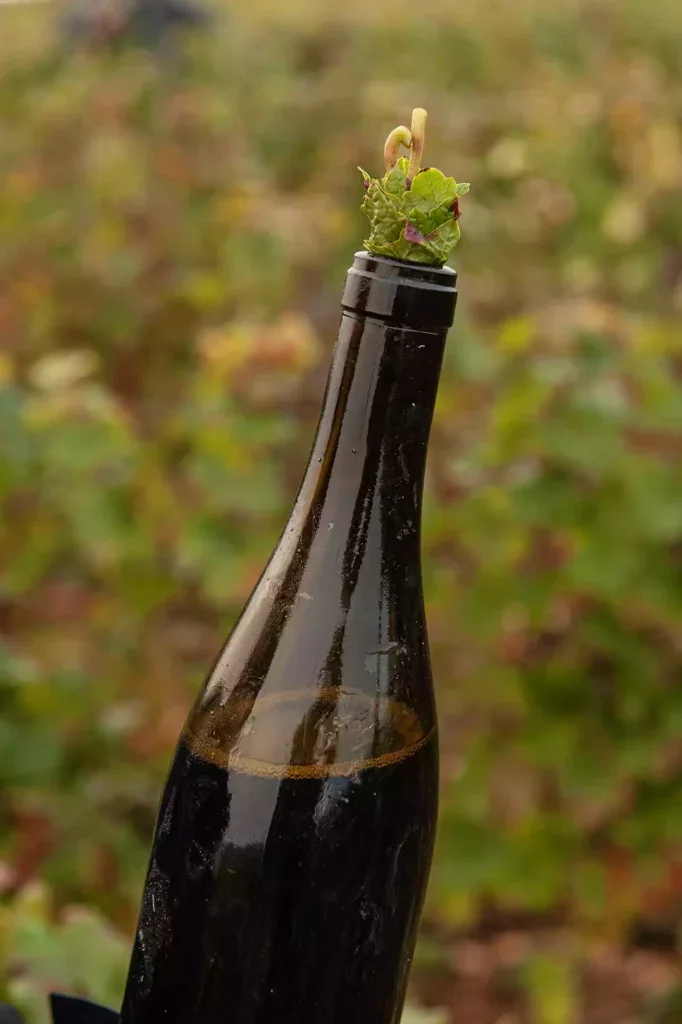
Tasting
Kumeu River 2002 Estate Chardonnay
Under cork, the wine was pretty oxidized, while under screwcap it was hanging on, with citrus and beeswax on the aroma, then toasted hazelnuts and a touch of Marmite on the palate. Clearly, I preferred the screwcap, but even this was bit past it for my palate. As someone said to me in Canada recently, “I like old wines but I don’t want a glass of roasted nuts.” Panel vote: screwcap 17, cork 0.
Kumeu River 2002 Maté’s Vineyard Chardonnay
The screwcap wine was still palate in color and showed citrus and brioche aromas. Quite attractive up-front and much more youthful than the Estate Chardonnay, but it became a little bitter to finish. Under cork, however, the wine was flat and oxidized. Someone remarked, “If this was Burgundy, we’d be speaking of pre-mox.” Screwcap for me. Panel vote: screwcap 14, cork 3.
Felton Road Chardonnay 2001
Nicola Greening from Felton Road recalled that this was a hot vintage and the vines were young, planted in 1992. It was barrel-fermented, with a higher proportion of new oak than is currently used. Both cork and screwcap were very evolved, but not quite as evolved as the Kumeu River’s slightly younger wines. Both versions had a tinned asparagus aroma. On the palate, the wine under cork was heading toward toffee apple, with a hint of burned caramel on the finish. Any fruit had fled the bottle, leaving an impression of oak. I preferred the screwcap, which seemed softer and purer. Panel vote: screwcap 15, cork 2.
Verget Chablis Bougros 2009
While the results for the New World wines seemed predictable, this next duo of cork and screwcap shook things up. The wine under cork was clearly more engaging and fresher wine, in which the warm vintage was reflected in the aroma of sweet hay with a touch of honey, while the palate was rich up-front, but tightened to a firm and extended, steely finish. The screwcap, by contrast, had a more evolved honey into toffee apple aroma and the palate was fuller and looser with a shorter finish. I liked the way the cork kept the wine trimmer, brighter, and much more youthful. The screwcap was the inferior Sarantex. Panel vote: screwcap 2, cork 10, tie 2.
Château des Tourettes Tinus Chardonnay Vin de France 2017
A Guffens au Sud wine from a vineyard on a limestone plateau. In this, the first Diam vs screwcap face-off, both wines were quite closed. I marginally preferred the screwcap, but it was a close-run thing. The Diam wine had a smoky, reductive aroma, with a straight, fresh, and tight palate, while the screwcap had Riesling-like kerosene characters and a lime-fresh finish. Both were still looking youthful, but the screwcap seemed a touch more evolved. This was a Diam 10 and the screwcap the superior SaranTin version, since the switch to it had been made from 2014. You might suppose the SaranTin screwcap would be more reductive, but it was not the case. Panel vote: screwcap 10, Diam 4, tie 3.
Château Closiot 2019 Le C de Sec Bordeaux Blanc
In this SaranTin screwcap vs Diam 10, the screwcap was once again the slightly more open of the two, which brought forward the spicy character of the Sauvignon Gris that represents 25% of this blend. I preferred the more focused, intense, and savory wine under Diam. Panel vote: screwcap 3, Diam 12, tie 2.
Verget 2004 Chassagne-Montrachet Premier Cru Chenevottes
In this screwcap vs cork duo, both bottles had a delicious, honeyed, brioche aroma and were seductive on the front of the palate, but there they diverged, with screwcap taking a straight line, lean and lemon-pithy, while the cork opened up and showed more body, generosity, and juiciness, with a fresh finish. So, I felt the screwcap narrowed the wine, keeping it in the high-acid profile of the cold vintage, while the cork allowed more expression of this terroir, which is always among the most engaging and fruit-driven of Chassagne-Montrachet premiers crus. There wasn’t really much between them for quality. The cork was clean as a whistle, so I vote cork and terroir over vintage. Panel vote: screwcap 3, cork 12, tie 2.
Verget 2009 Puligny-Montrachet Premier Cru Sous le Puits
Screwcap vs cork, but this time there was no contest—the cork was much fresher. When I tasted, I unfairly assumed that the screwcap was the fresher wine. It was interesting to see a second Verget wine from the rich 2009 vintage, which you’d think would benefit from a more reductive closure. The aroma of Sous le Puits under cork was still remarkably floral and upright and the palate quivered. A fine, high-wired structure—yes, there is the 2009 richness, but sweet and high-toned, with a saline, linear finish. Spot-on for typicité. The screwcap, albeit the inferior Sarantex, was disappointing; more evolved and honeyed on the aroma; that’s alright, but the palate seems flat and a bit tired, if not slightly oxidized. The panel, however, was evenly split: screwcap 6, Diam 7, tie 4.
Verget 2011 Puligny-Montrachet Premier Cru Sous le Puits
This again was screwcap Sarantex vs cork, but I found both of them quite similar, with modest intensity, well-balanced, showing a touch of minerality, but not much terroir identity and a bit pedestrian. Maybe the screwcap wine was a little more compact, but not enough for me to argue the wine was better or more interesting, so I scored them equally. 2011 was a pleasant enough vintage that will not repay aging further. Most of the panel, however, preferred the screwcap. Panel vote: screwcap 13, cork 1, tie 3.
Verget 2003 Corton-Charlemagne
Goodness me, once again the cork trumped the Sarantex screwcap. Corton-Charlemagne under cork still showed sweetness, generosity, and seduction on the palate, whereas I found there was little left but oak on the screwcap wine, which was bald in comparison. The cork had preserved the wines from this hot dry vintage much more successfully for me. Panel vote: screwcap 5, cork 10, tie 2.
Verget 2012 Meursault Les Clous
Sarantex screwcap vs Diam 10. I found the wine under Diam had the sweet citrus character of the vintage and some of high-toned tension of Les Clous, but also had struck-match reductive notes, which were maybe too overt, while the screwcap wine was not as bright and certainly more evolved. Julien recalls he added more SO2 at bottling with the Diam, and he wonders whether it might have been too much. Whether it is the SO2 or the Diam, I would rather have the fresher wine. Panel vote: screwcap 9, Diam 10, tie 1.
Verget 2015 Meursault Les Clous
Diam 30 vs screwcap SaranTin—so a higher end version of both, and to me, the Diam was the clear winner. I found the screwcap thinned and dried out the wine leaving a bitter finish, while under Diam the opulence of the 2015 was evident and yet it had proper Clous like tension which carried to a firm and nicely persistent finish. The panel was evenly divided. Panel vote: screwcap 7, Diam 6, tie 4.
Verget 2013 Mâcon-Vergisson La Roche
Diam 5 was used for this wine from the north face of the Vergisson rock in the cold and wet 2013 vintage. I can’t say I really liked either wine, as both were very herbaceous, and I am not sure the closure made much difference. A tie for me. Panel vote: screwcap 5, Diam 7, tie 5.
Verget 2013 St-Véran Lieu Interdit
Diam 10 vs Sarantex screwcap. The Diam was more evolved, but I preferred it. Panel vote: screwcap 8, Diam 7, tie 2.
Verget 2014 Pouilly-Fuissé Les Combes VV
I found Les Combes under SaranTin screwcap was richer and more open and inviting, while the wine under Diam had a purer and fresher aroma, but it was very tight and lean on the palate, a bit too reductive maybe, so I preferred the former. But it was quite a close-run thing. Panel vote: screwcap 9, Diam 6, tie 2.
Verget 2010 Pouilly-Fuissé La Roche
Cork versus Sarantex screwcap. This was the last vintage in which Jean-Marie used cork, and I much preferred La Roche 2010 under cork. Straight, clean, energetic, and well-defined, this cut across the palate to a saline finish, very expressive of the terroir, while I found the hallmark of the vintage, as well as evolution, more evident in the screwcap wine, which was rich, salty, and creamy, and while non unattractive, for me the terroir and finish were more precise under cork. Panel vote: screwcap 5, cork 11, tie 1.
Verget 2014 Pouilly-Fuissé La Roche
La Roche under SaranTin screwcap was pure, light, tight, bright, and salty, definitely some reserve here, while under a Diam 10 it was more open and forthcoming. I liked them both, so it was a tie for me. Panel vote: screwcap 3, Diam 10, tie 4.
Verget 2015 Pouilly-Fuissé La Roche
Both examples from the rich 2015 vintage were seductive and glossy, but I preferred the more expressive wine under SaranTin screwcap. In 2015, Guffens moved to a Diam 30 which, together with the free SO2, made the wine more reserved. Again, in the panel vote there was not much between SaranTin and Diam: screwcap 6, Diam 7, tie 4.
Verget 2015 Pouilly-Fuissé La Roche
Both examples from the rich 2015 vintage were seductive and glossy, but I preferred the more expressive wine under SaranTin screwcap. In 2015, Guffens moved to a Diam 30 which, together with the free SO2, made the wine more reserved. Once again, in the panel vote there not much between SaranTin and Diam: screwcap 6, Diam 7, tie 4.
We finished with some reds
Château Rauzan-Ségla
Ségla 2009: Panel vote: screwcap 11, cork 5.
Ségla 2010: Panel vote: screwcap 8, cork 7, tie 2.
Kumeu River 2000 Melba
The Brajkovich family have since grubbed up this vineyard. The screwcap was universally preferred.
Felton Road 2001 Pinot Noir
Panel vote: screwcap 12, cork 4, and tie 1.
Henschke Mount Edelstone Shiraz
Panel vote: screwcap 10, cork 4, tie 3.
Isole e Olena Cepparello
Both vintages seemed more elegant under screwcap, with a finer, lighter texture.
Cepparello 2005: Panel vote: screwcap universally preferred.
Cepparello 2016: Panel vote: screwcap 7, cork 8, tie 1.
Panel of tasters
Stephen Browett (Farr Vintners)
Josh Castle (Noble Rot/Keeling Andrew)
Oz Clarke
Julien Desplans (Maison Verget)
Rebecca Gibb MW (Vinous)
David Gleave MW (Liberty)
Jamie Goode
Nicola Greening (Felton Road Wines)
Marie Guffens (Domaine Guffens-Heynen)
Joss Fowler (Vinolent)
Ella Lister (Le Figaro)
Sophie Liverman (Sessions Arts Club)
Sarah Marsh MW
Thomas Parker MW (Farr Vintners)
Chas Peterkin (Four Walls Wine)
Jancis Robinson MW
Tim Sykes (The Wine Society)

